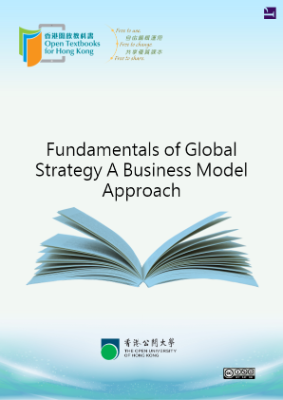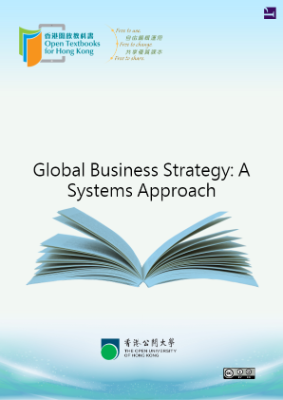This open source textbook is derived from many sources, initially from the Principles of Management by Carpenter, Bauer, and Erdogan, but there is abundant new content as well. It is published under a Creative Commons license and as such there is no charge ever for this textbook.
The most important change from 1e is that static content was removed to make room for student-generated dynamic content. Throughout the book look for the names of contributing students in the red colored example boxes. As the term progresses, you will see new examples appear as fellow students research and summarize topics for current events, all are curated by the instructor.
What Is Strategic Management?
Strategic management, strategy for short, is essentially about choice — in terms of what the organization will do and won’t do to achieve specific goals and objectives, where such goals and objectives lead to the realization of a stated mission and vision. Strategy is a central part of the planning function in P-O-L-C. Strategy is also about making choices that provide the organization with some measure of a sustainable competitive advantage. For the most part, this chapter emphasizes strategy formulation (answers to the “What should our strategy be?” question) as opposed to strategy implementation.
Strategic Management in the P-O-L-C Framework
If vision and mission are the heart and soul of planning (in the P-O-L-C framework), then strategy, particularly strategy formulation, would be the brain. Figure 1.3 summarizes where strategy formulation (strategizing) and implementation fit in the planning and other components of P-O-L-C. We will focus primarily on the strategy formulation aspects of strategic management because implementation is essentially organizing, leading, and controlling P-O-L-C components. Unit 4: Internal Capabilities of this textbook will provide additional information regarding the implementation components (O-L-C).
You see that planning starts with vision and mission and concludes with setting goals and objectives. In between is the critical role played by strategy. Specifically, a strategy captures and communicates how vision and mission will be achieved and sets forth the goals and objectives needed to demonstrate that the organization is on the right path for achieving them. At this point, even in terms of strategy formulation, there are two aspects of strategizing that you should recognize. The first, corporate strategy answers strategy questions related to “What business or businesses should we be in?” and “How does business X help us compete in business Y, and vice versa?” In many ways, corporate strategy considers an organization to be a portfolio of businesses, resources, capabilities, or activities.
The logic behind corporate strategy is one of synergy and diversification. That is, synergies arise when each of YUM! Brands food outlets does better because they have common ownership and can share valuable inputs into their businesses. Specifically, synergy exists when the interaction of two or more activities (such as those in a business) create a combined effect greater than the sum of their individual effects. The idea is that the combination of certain businesses is stronger than those same businesses would be individually. Their coordination under a common owner allows them to either do things less expensively, or of a higher quality.











